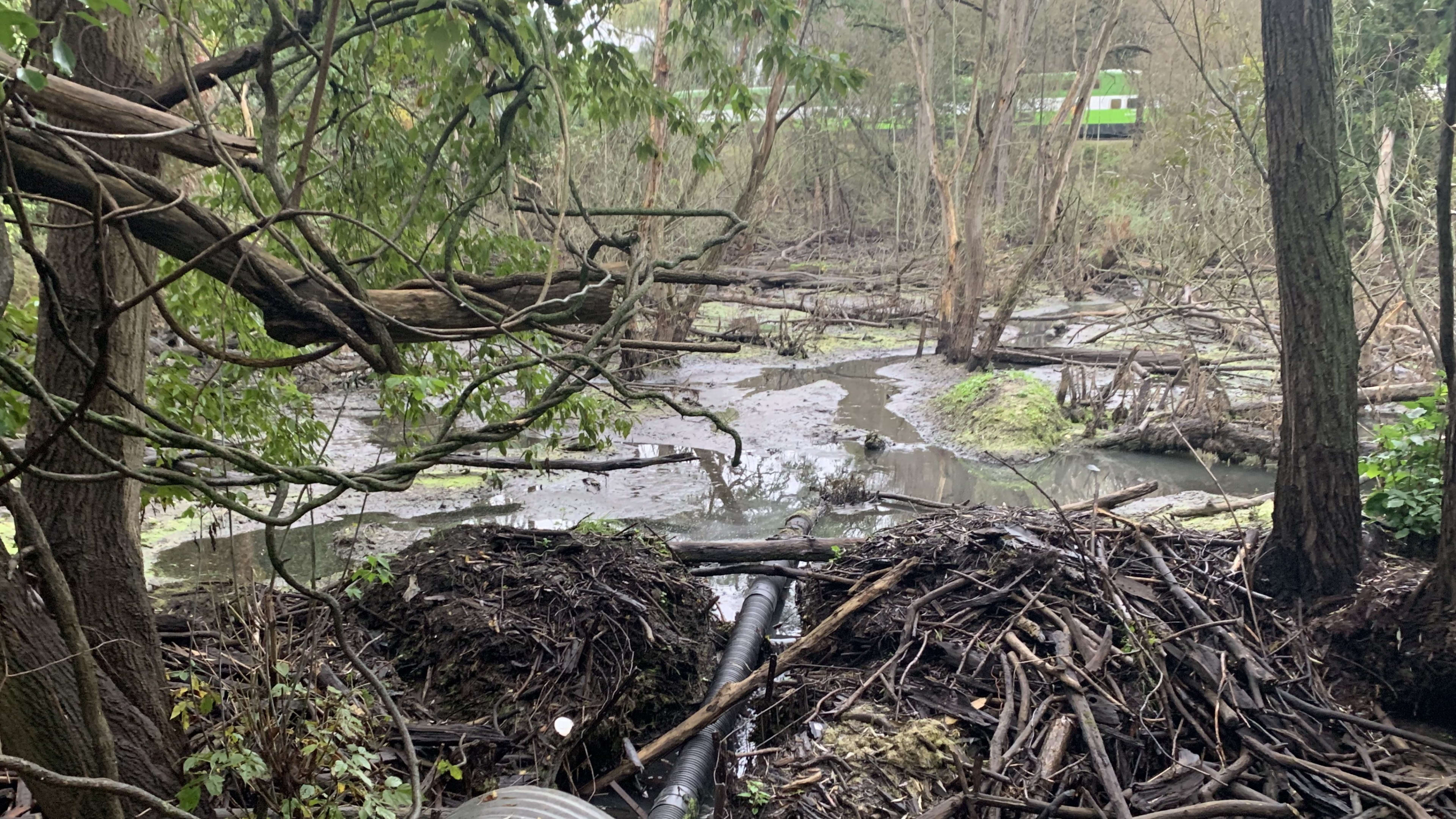Baffling busy beavers in the name of rail safety
Metrolinx News looks at how Metrolinx keeps riders safe while still respecting Ontario’s beavers.
Oct 14, 2021
As our national mascots, beavers are loved, but railway safety demands constant vigilance to make sure tracks are not damaged by the flooding that can result from their dams.
A washout – the sudden erosion of the soil supporting the track bed, caused by gushing water – cannot be detected by railway signal systems. By the time a train engineer can see the washout, it is too late to stop.
Metrolinx officials say that beavers often form a dam, which then saturates the banks of the river or stream, and eventually can cause the embankment to crumble.
In recent years, train derailments in Manitoba and the Ottawa Valley resulted from flooding caused by beavers.
Stock image of a beaver ( Niklas Jeromin photo from Pexels.com)
Fortunately, this threat can be mitigated with regular inspections of culverts near tracks.
Transit officials say culverts are put in to allow water to pass across from one side of the railway embankment to the other.
Culverts keep water moving directly under the tracks, nearby roads or landscaping and must be kept clear to prevent flooding. The Railway Safety Act permits railways to enter adjacent properties to perform any mitigation work necessary to preserve safety.
While this is clearly an issue in rural areas, some beavers do live in green spaces within the Greater Toronto and Hamilton area, so the resulting flooding can also be an issue for nearby homeowners.
In this example, the culvert is fed by the beaver baffle pipe, which goes through the beaver dam, carrying water from the stream. This protects the nearby embankment from saturation and erosion, allowing trains to run safely. (Mike Winterburn photo)
If a beaver dam is found too close to the tracks, Metrolinx has a variety of tools to keep water flowing through the area – without touching the animals.
One of these tools is called a beaver baffle – because it gives beavers a puzzle they can’t solve.
This before shot, taken near Guelph, shows a spot where a beaver dam had been built and cleared along the tracks. (Metrolinx photo)
A corrugated plastic pipe is run through the beaver dam and into the culvert. This allows the creek or stream to flow, gradually bringing the water levels back down to their previous state, while still leaving the dam standing around the pipe.
The gradual fall in water level is important because a beaver does not immediately notice the change, so there is no panicky, upstream swim from the beaver lodge, to fix the dam.
Metrolinx officials say beaver baffles don’t stress the animals because they can’t determine why the water levels are dropping. So, eventually they will learn to live with the water level that’s sustained, or they will find somewhere else to live, potentially further away from the tracks.
This means the water level can be returned to its previous state without the beaver having direct human contact. In the very rare case where a beaver absolutely must be moved, it will be humanely released within a 1 km radius.
In the after shot, a culvert cage has been added to keep the water flowing and prevent floods. (Metrolinx photo)
Beaver baffles are inspected annually to make sure debris is not blocking them.
The culvert cage is another tool that can be used to keep water flowing safely. As the name suggests, it looks like a cage and it protects the culvert by keeping the beavers away.
With both tools, the goal is always the same – to keep passengers, beavers, and the surrounding environment safe and secure.
by Mike Winterburn Metrolinx communications senior advisor
